THE FALLBACK NAME WAS CALAUGUSTA CAFE—”I’m a big believer in Danny Meyer, who says ‘Call it what it is,’ and it is at California and Augusta,” says Michael Simmons. That’s what the Humboldt Park cafe was called when I kicked in to its Kickstarter last fall, so I was a little surprised when it opened as Café Marie Jeanne in the beginning of January. Though I thought I understood why—on the one hand, a French name suggestive of that cuisine being on offer, but at the same time, nothing too pretentious—a cafe called plain Mary Jane, basically.
I was close, Simmons says. “In Quebec, Marie Jeanne is your old-fashioned aunt. It’d be like us calling it Aunt Bea,” he says. But there’s a subtle hidden message about his cafe’s wine focus, too—a bit of obscure wine geekery. “In Burgundy, a Marie Jeanne is an oversized bottle,” 2.25 liters putting it between a magnum and a Jeroboam. (At dinner a few nights later, I verified the obscurity—a wine-savvy crowd had never heard the term.) A simple place, with serious thoughts about food and wine behind it—exactly what you hope to find on the retro corner that after decades of obscurity, suddenly became a hot bar and restaurant row.
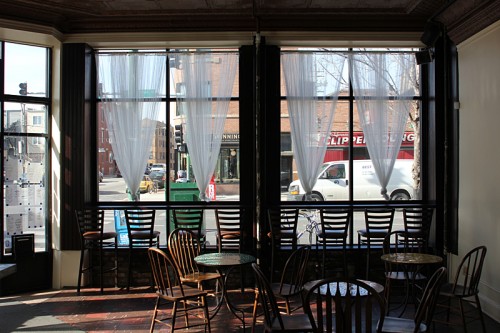
In fact Quebec, Montreal in particular, is an important reference for Simmons about what kind of place Café Marie Jeanne is meant to be—the menu is studded with simple, satisfyingly carnivorous things, from housemade bacon and braunschweiger (which he made for Key Ingredient at Rootstock) to smoked whitefish and plates of oysters, along with simple things like grilled cheese sandwiches and French onion soup. As in a place like Joe Beef, it’s kind of timeless food for hearty, wintry places, in a space that shades gently from breakfast cafe to lunch spot to wine bar at dinner. I suggest that he should exploit the Montreal—analogy? Positioning? But Simmons is too honest: “We’re not making strictly Montreal food, or Parisian food. The food, especially in the middle of the day, is pretty American—it gets more French at night. The thing is, I really liked Montreal, but I’ve only been a couple of times for a few days. I can’t really say I know it enough to say, this is like Montreal.”
And in any case, its real roots are in Chicago. “I’ve worked at hundreds of restaurants,” Simmons says, but Café Marie Jeanne seems a pretty clear descendant of two of them in particular. One is Lula Cafe, the archetypal hippie cafe that helped invent a new genre for places like itself, the “farm-to-table” restaurant. The food—relatively simple, earthy, comfily nourishing—easily reminds you of Lula when it’s something like a plate of warm housemade sausage and lentils.
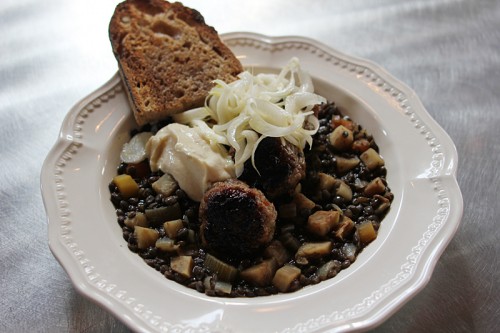
Sausage and lentils, topped with aioli and sautéed leeks.
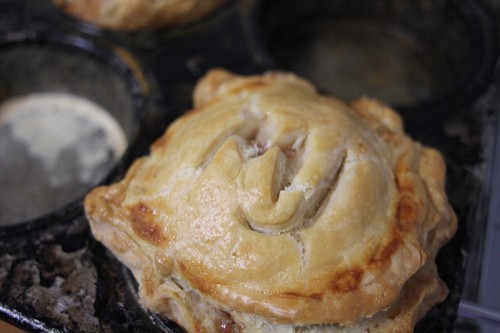
Signature meat pie.
The other is the place that Simmons is best known for having been the chef of—Rootstock, the wine bar which sits catercornered to Café Marie Jeanne. Although the California Clipper bar has been there on California since its retro travel theme was up to the minute, it was Rootstock that really pioneered the neighborhood for food and drink, and many of the people working here have some Rootstock history (or history at Webster’s Wine Bar, which is where Rootstock’s founders came from). That includes Simmons’ wife Val Szafranski and his partner Jamie McLennan, who is a partner at Rootstock and buys the wine for Café Marie Jeanne. The intent is to feature similarly quirky, food-friendly wines, often biodynamic and, Simmons says, “What the French call glouglou wines—wines that go down easy, glug glug.”
If that suggests that the split with Rootstock was friendly, it was—in fact, Simmons considered trying to share his chef duties between Rootstock and Café Marie Jeanne, until he decided that was impractical, and he made sure he had a good replacement in place before opening his own restaurant. The corner is like a small town in the way everybody knows everybody else, and Simmons likes finally having a view of the action. “I worked at Rootstock for 2 years, and you can’t see anything from in there, it’s cozy and dark on purpose. Now we’re here and I can look out the windows, and there’s people walking around, and a line at the Clipper. We’re part of a critical mass of coffeeshops—you walk into CC Ferns and it’s like you’re walking into a Instagram photo shoot, really cool and hip. It’s so homey at Spinning J—you’ve got the diner vibe and Dina’s so sweet, I love them so much, the place is so from the heart, you can feel it. This is like a really cool scene, and we’ve got a great vantage point to watch it happen.”
One reason they’re a little community is because Café Marie Jeanne, Spinning J, CC Ferns and the Clipper (both managed by Brendan Sodikoff), and The Haywood Tavern on the last corner may have different owners, but all occupy buildings owned by one “70-year-old Italian,” Gino Battaglia, who bought up the buildings in Humboldt Park’s dimmest days. Simmons gleefully points out that his cafe still displays the tile that Battaglia bought on the cheap in Sicily—”That’s the same floor that’s in Rootstock, the Haywood Tavern built over it, and the Clipper finally did when Sodikoff took over—though you can still see it in the bathrooms.”
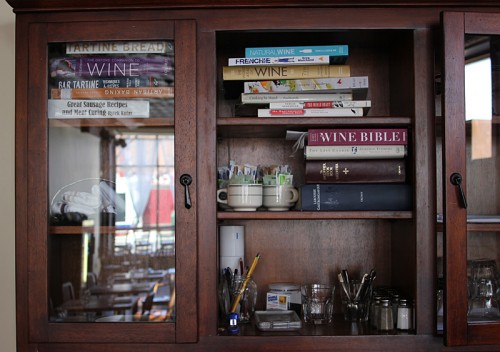
The library pretty much sums up what the restaurant is interested in.
The downside of being part of a neighborhood’s revitalization, though, is that it’s a sensitive subject in a place like Humboldt Park, with strong feelings about its ethnic identity (Puerto Rican and Mexican, though that’s only since the 1950s; Norwegian American Hospital is tucked in the neighborhood behind the Clipper). Simmons had to be careful early on because the closing of the business in the space before him, a sandwich cafe called Knockbox, had left some bad feelings coming on the heels of Sodikoff taking over the Clipper.
“We knew that it was going to be hard for us, because people loved that place,” he says. “We didn’t have anything to do with them leaving. Seeing some revitalization in this neighborhood is cool, but at the same time—the R word and the G word [gentrification] are pretty interchangeable, and that’s why we want to be careful. We’ve gotten a little bit of flak from people who loved the Knockbox, but not too much. So far, sentiment has been good. I like this neighborhood, I love the park—I don’t know if you’ve ever spent any time at the park, especially around the formal gardens—it’s striking.”

Prepping baguettes.
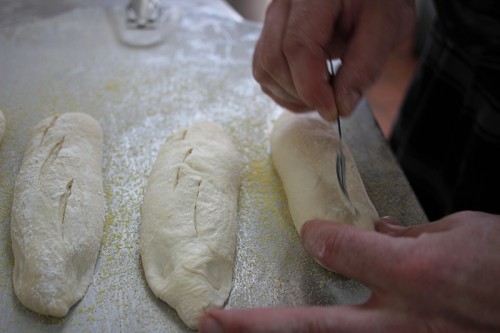
Scoring the loaves.
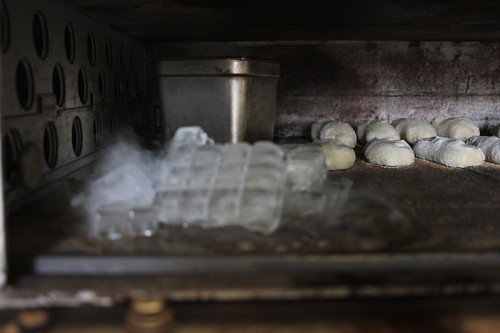
Making steam in the oven.
ONE OTHER PART OF SIMMONS’ WORK BACKGROUND has proven to have more importance at Café Marie Jeanne than he expected at first. “My foodie cred is that in 1998, ’99, I worked at Red Hen Bakery and lived in Pilsen. Nicole Krasinski, now of State Bird Provisions fame [in San Francisco] and her husband Stuart Brioza and I all worked together. I made the bread, and expanded with them and saw new accounts like Blackbird and Lula come on. Jean Banchet would come in and tell you the baguettes weren’t dark enough and why the bread sucked, and then pat you on the back. It was pretty good.”
Bread is the kind of thing a restaurant might put off till the end in the hectic activity of opening. But Simmons says, “Coming here, I started looking at the guts of the place and there was a pizza oven. I looked at the decks and said, these decks are solid, good stone decks, and they’re big—I bet you can bake pretty good bread in this thing.”
A chunk of crusty bread is the obvious accompaniment to a dish like that sausage and lentils one, and Simmons says “It’s actually became a defining factor of the food here, that I didn’t expect it to—that we’re baking bread means that, there’s a lot of time and energy spent developing the recipes. And we have this beautiful flour and ingredients. I’ve got a baker, and I’m showing him the recipes and it gets better and better every week, so then I’m like, let’s throw some vinoiserie at him. So we started making croissants, and those are getting better and better all the time, and now we’re making some meat pies and vegetable pies and things like that, too.”

Croissants
“So you’re beginning to see, through the menu, that we’re like a baker place. I wouldn’t begin to compare myself to Tartine or something like that, but there’s a natural flow of how having a full scale bakery in your restaurant can shape the way a lot of your food comes off. And that’s why I opened with eleven sandwiches on my menu. If you had looked at me and told me that I was going to open a busy sandwich shop, I’d have probably punched you in the face,” he laughs. “But it turns out, a lot of things I like to make, like braunschweiger, go pretty well on a nice crisp baguette.”
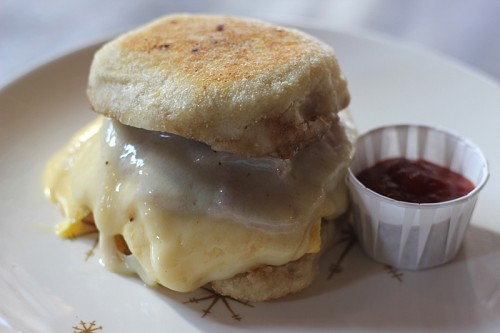
The breakfast sandwich came about because someone came in and asked for one. There wasn’t one on the menu—”I didn’t think of that”—so Simmons said “Tell me what you like and I’ll invent one!” This has comté cheese, jamon and scrambled egg. Plus ketchup.
Michael Gebert is the Aunt Bea of Fooditor.
Correction: the volume of a Marie-Jeanne in Burgundy has been corrected.
Latest
Join the Discussion
After you comment, click Post. If you're not already logged in you will be asked to log in or register with Disqus.




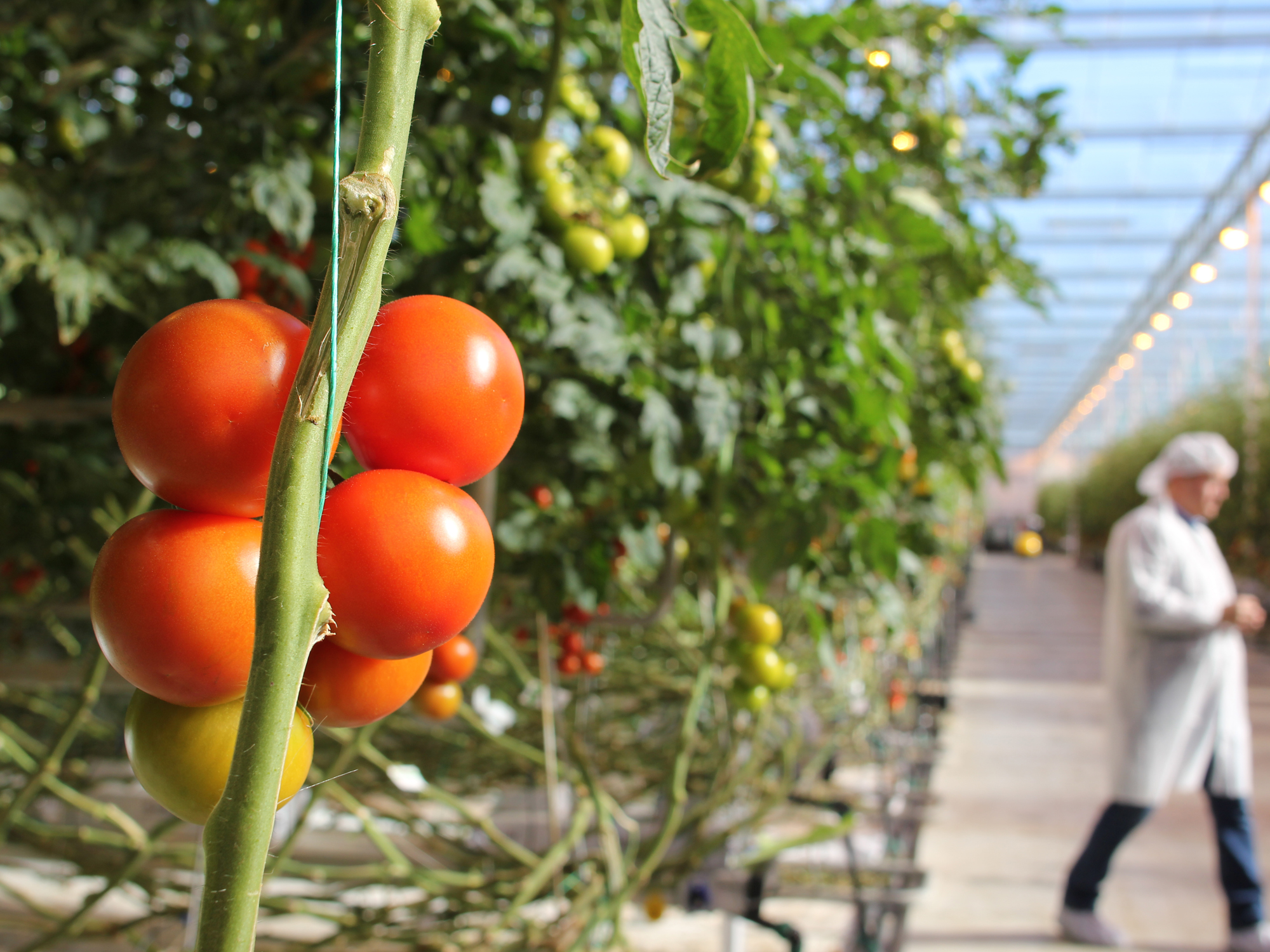
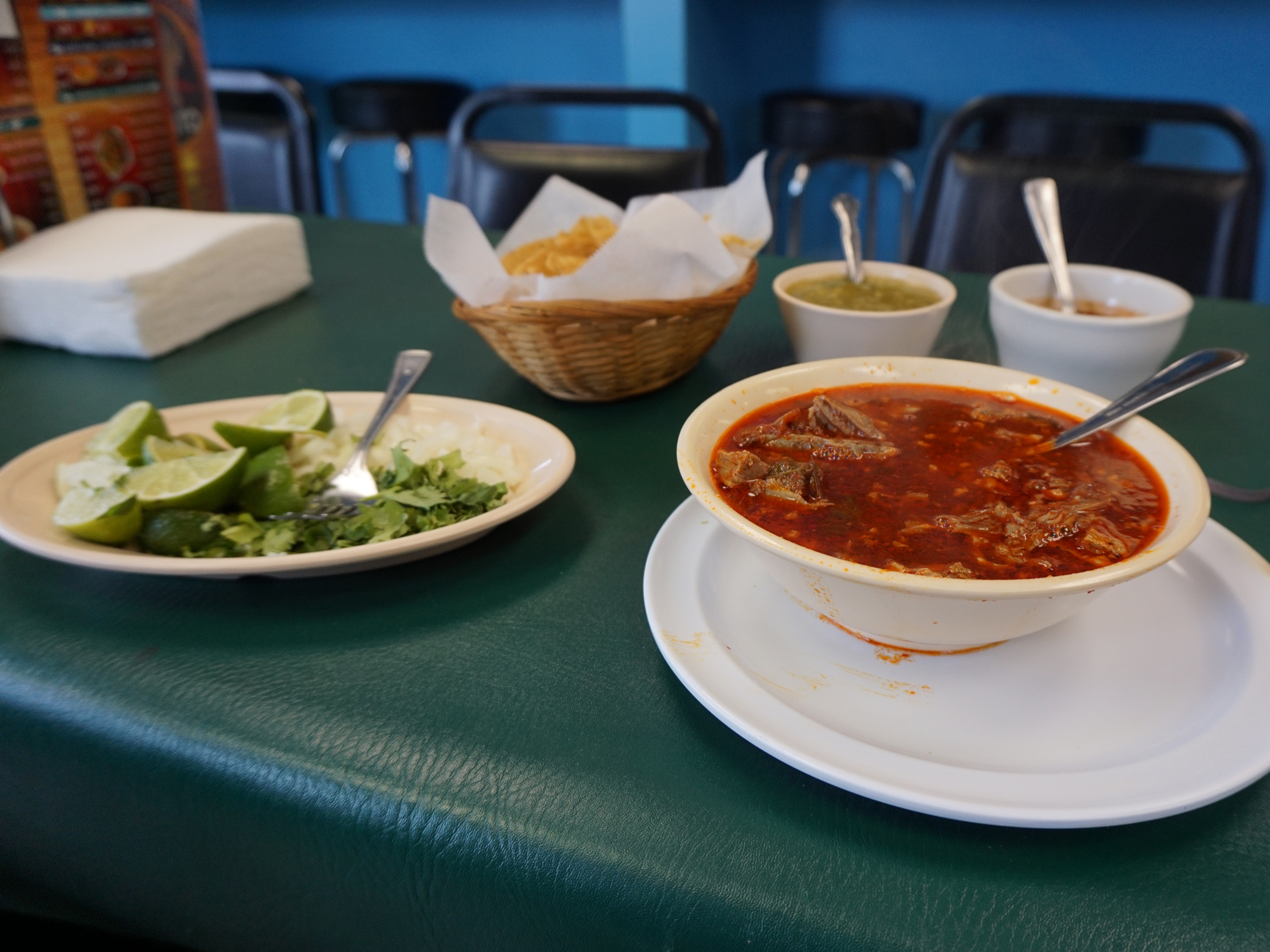
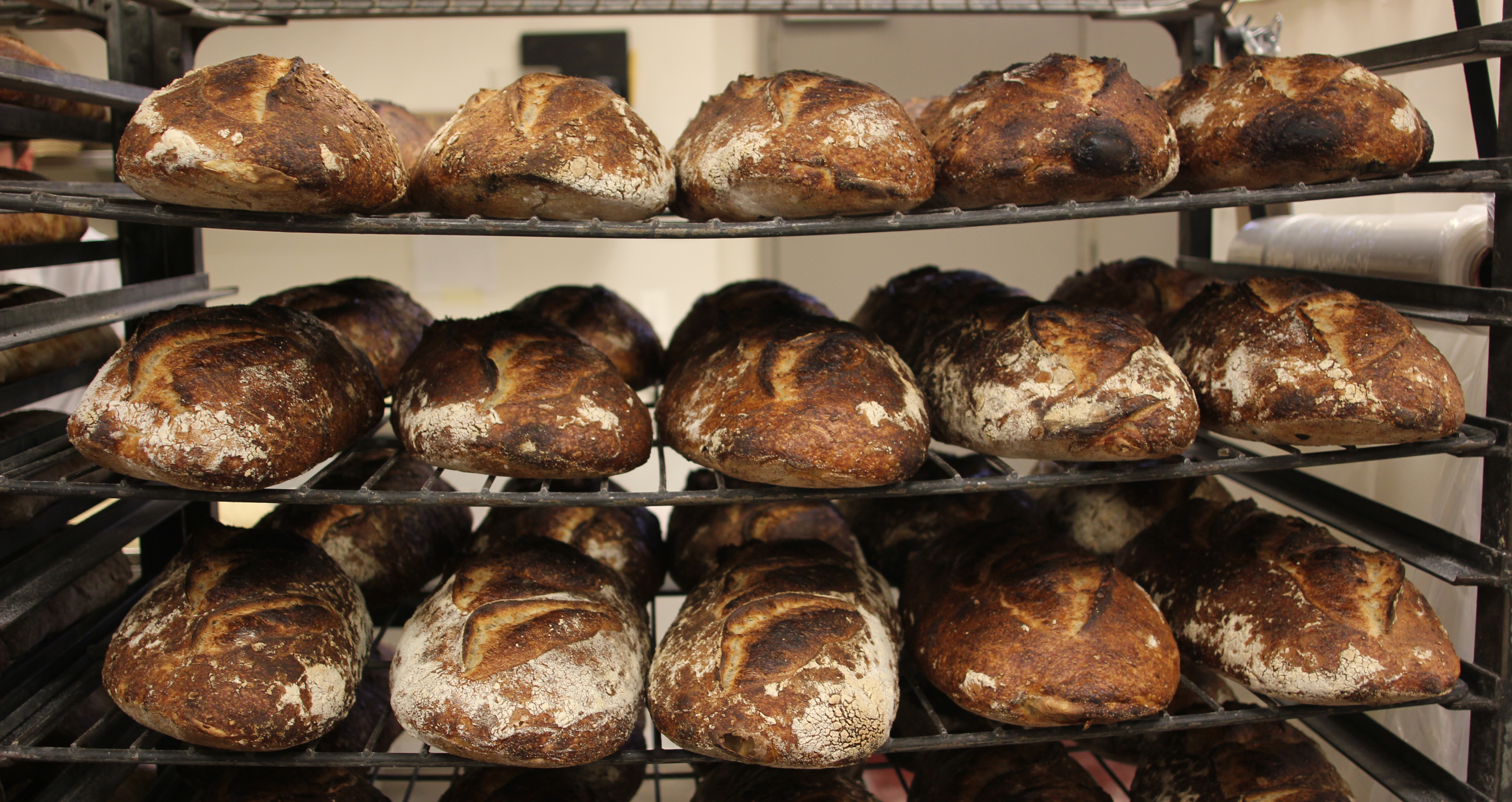
I think you meant 98-99 for the Red Hen/Pilsen years. Great article though! Thanks.
You are correct and it is corrected. Thanks.